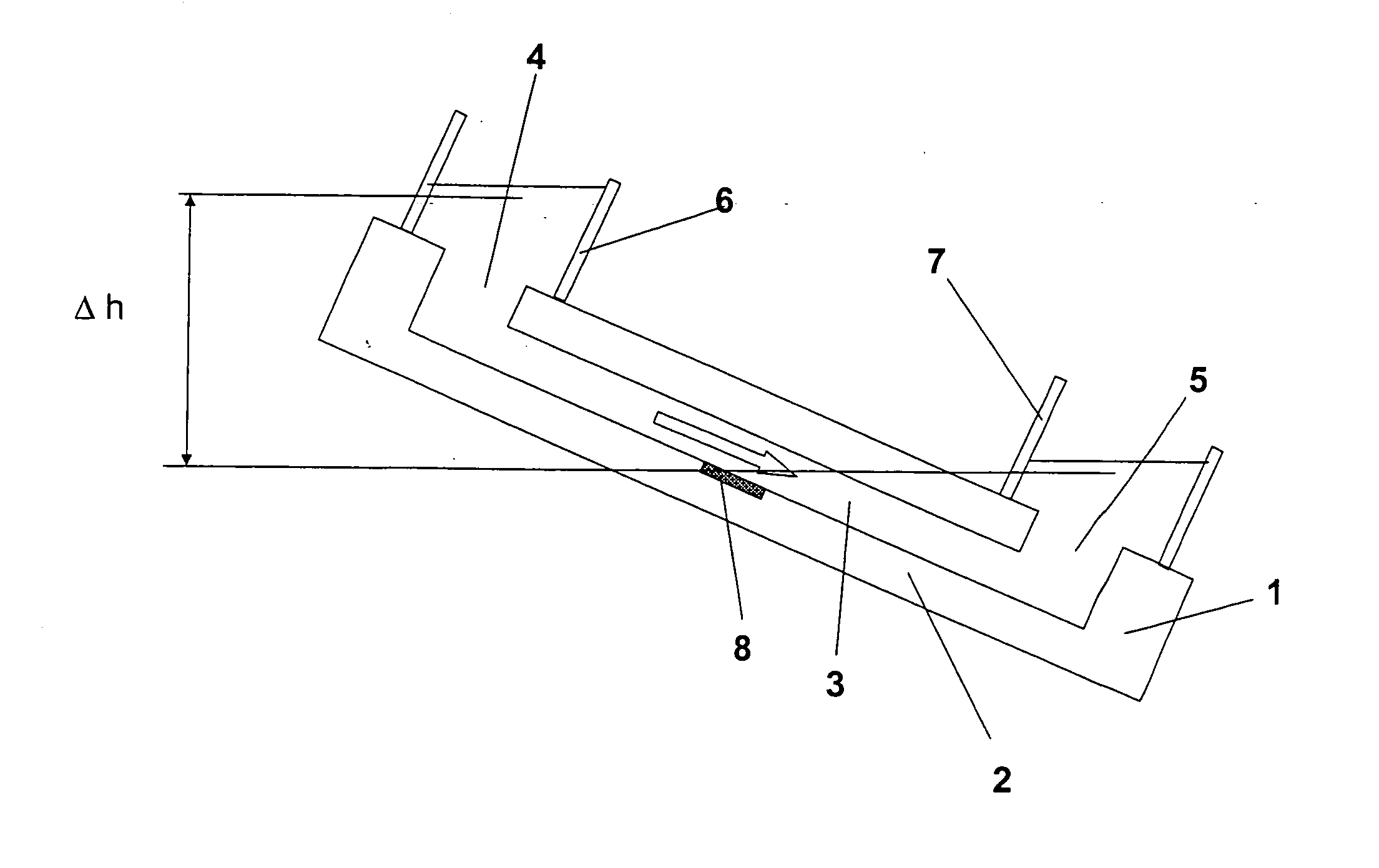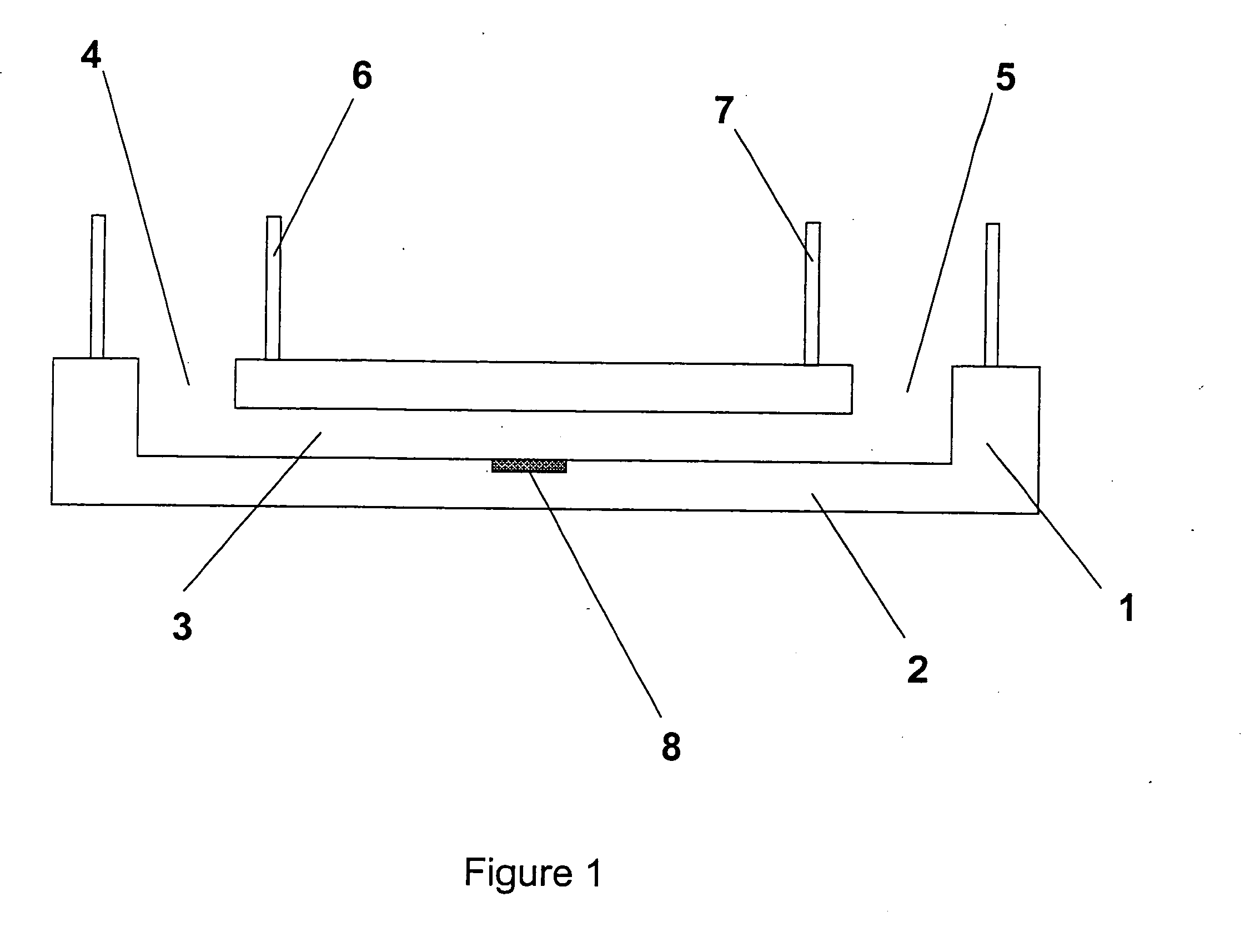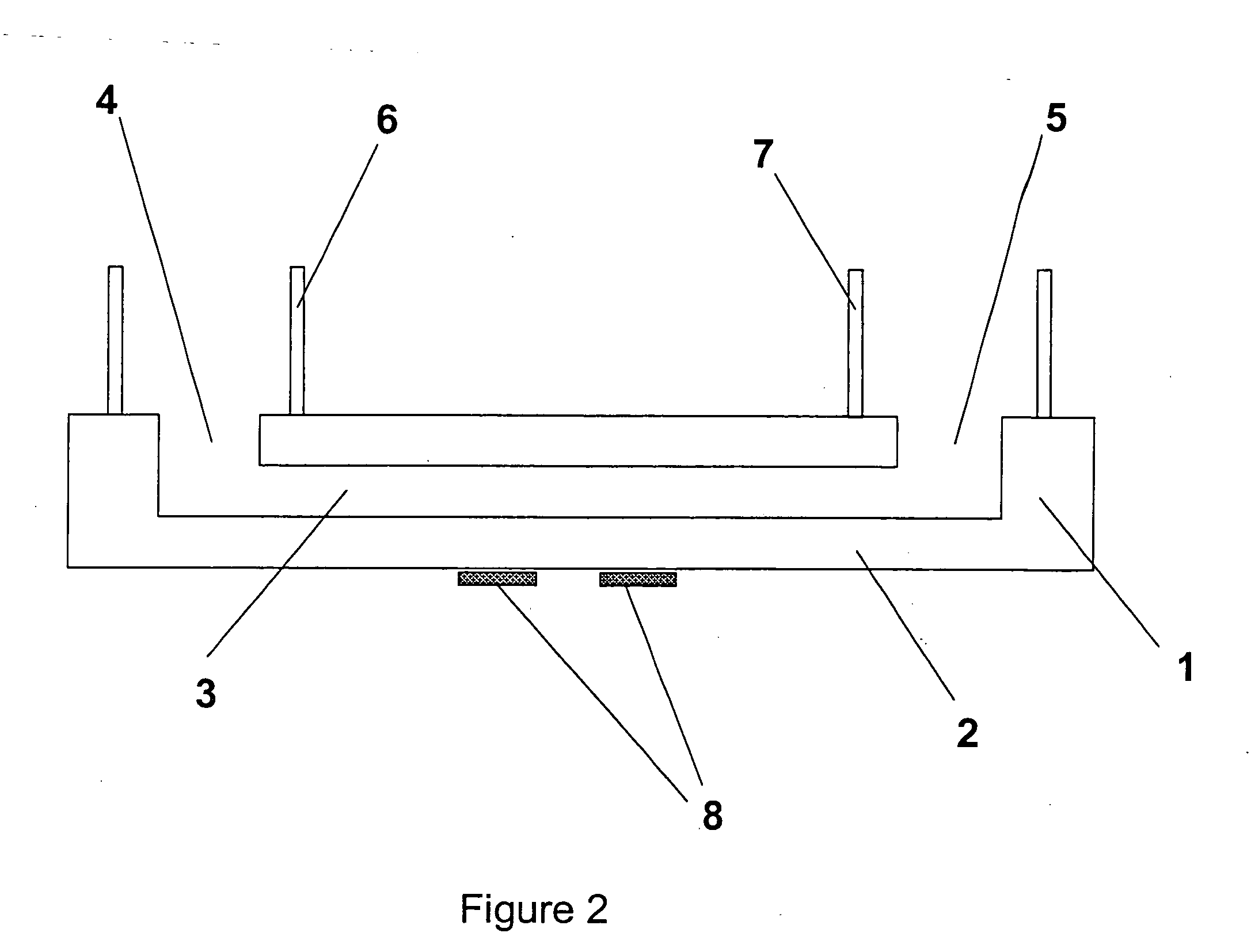Microfluidic flow monitoring device
a microfluidic flow and monitoring device technology, applied in laboratory equipment, electrolysis components, biochemistry instruments, etc., can solve the problems of increasing cost, cumbersome approaches, and difficulty in real sample handling
- Summary
- Abstract
- Description
- Claims
- Application Information
AI Technical Summary
Problems solved by technology
Method used
Image
Examples
Embodiment Construction
[0041]FIG. 1 shows a microfluidic device 1 (also referred to hereinafter as a microchip). Whilst a polymer-based microfluidic device is preferred, different devices, including glass, silicon, ceramic materials, etc can also be used.
[0042] The microchip 1 is composed of a body 2, said body comprising a covered microchannel 3 having a least one dimension compatible with laminar flow conditions. The covered microchannel has at least one inlet 4 and one outlet 5, the inlet and outlet each being composed of a hole, a tip or a venting material enabling the passage of fluids (gas or liquid). In this example, the inlet 4 and the outlet 5 are respectively surrounded by an inlet reservoir 6 and an outlet reservoir 7. A detector 8, comprising an integrated electrode, is in contact with the body 2 such as to enable the detection of changes due to the presence and / or the flow rate change of a fluid in the covered microchannel 3.
[0043]FIG. 2 shows a device similar to that shown in FIG. 2, but c...
PUM
| Property | Measurement | Unit |
|---|---|---|
| angle | aaaaa | aaaaa |
| current | aaaaa | aaaaa |
| total current | aaaaa | aaaaa |
Abstract
Description
Claims
Application Information
 Login to View More
Login to View More - R&D
- Intellectual Property
- Life Sciences
- Materials
- Tech Scout
- Unparalleled Data Quality
- Higher Quality Content
- 60% Fewer Hallucinations
Browse by: Latest US Patents, China's latest patents, Technical Efficacy Thesaurus, Application Domain, Technology Topic, Popular Technical Reports.
© 2025 PatSnap. All rights reserved.Legal|Privacy policy|Modern Slavery Act Transparency Statement|Sitemap|About US| Contact US: help@patsnap.com



